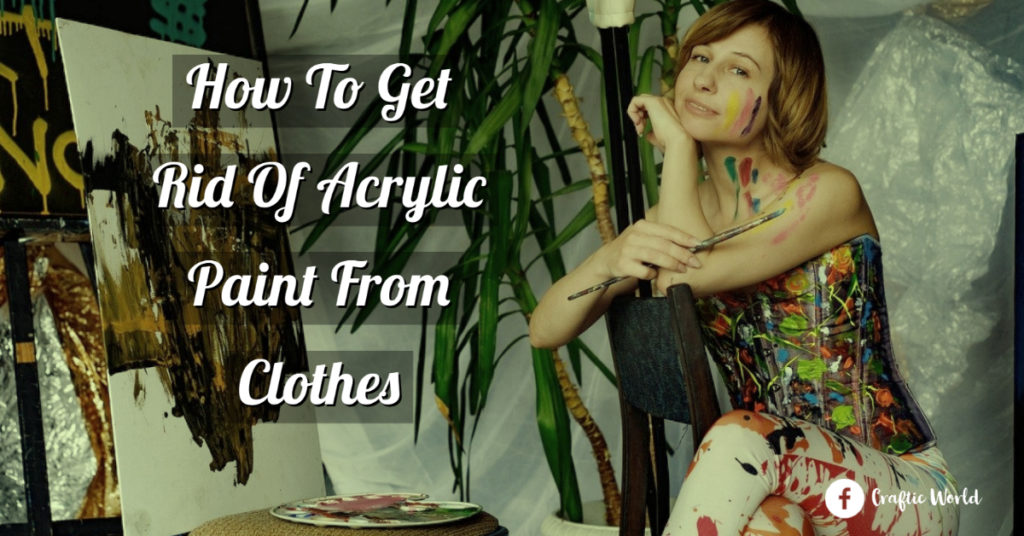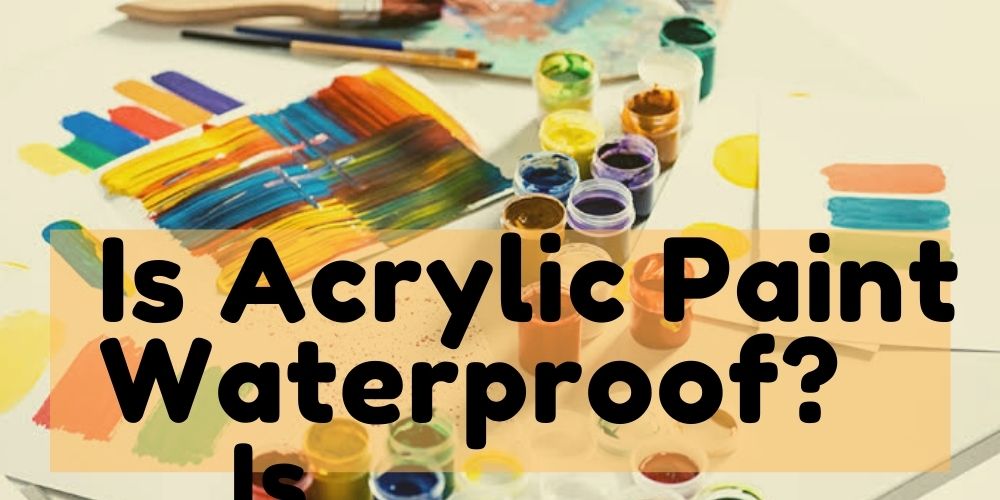A sealant or lacquer is a form of protective coating that you apply to your artwork to preserve it against change in color, pollution, UV radiation, and other factors that might otherwise harm acrylic paints. Sealants are often used to enhance the colors in your artwork. Gloss coatings are particularly helpful in bringing the darker hues in your acrylics to light.
If you’re heavy on glass painting then you should learn how to seal acrylic paint on glass. You may know that this is the paint type that is being used the most in modern art currently. I have added multiple ways in this article which I have mastered after working for more than 6 years in this field.

Furthermore, various sealants may give your designs a different appearance. It’s critical to varnish your acrylic artworks after they’re finished. Despite the fact that acrylics dry rapidly than normal, you should wait at least one week before varnishing to ensure that the paints have completely dried.
Even though an acrylic painting appears to be dried when touched hours after it has been created, it frequently remains wet below. In this post we will discuss more about how to seal acrylic paint on glass and some important tips related to it.
Does acrylic paint stay on glass?
Acrylic paint can stay on glass quite well. Acrylic paint is water-based, so it dries rapidly and therefore does not need oil or solvents to cure. It is always better to paint on glass since all you have to do is make sure the glass surface is clean before you start your artwork.
You may protect the paint once you’ve finished your craft by applying an acrylic sealer over it. It will strengthen your painting and give it a lustrous finish that many people appreciate when working on art pieces.
Things to consider before applying the sealant
How to seal acrylic paint on glass (7 Different Methods)

1. Proper Priming is important
Over the smooth glass surface a primer should be applied. If you’re going to use enamel paint, use an enamel-based primer. You may use a brush or a spray gun to apply the primer. Allow 24 to 72 hours for this coat to cure completely before painting over it.
Spraying sealants are recommended since there is less touch with the new glass and a great even surface may be achieved. The primer creates a rougher surface, which helps the paint adhere to the glass more securely, and is thus required to bind the acrylic on glass surfaces.
Gesso, Kilz or Folkart Titanium White are some good primer options for acrylic paint on glass.
2. Using Acrylic Paint sealant on glass
When applying Mod Podge Spray Acrylic Sealer to a design, use side-to-side brush strokes to apply one coat of Mod Podge. Allow about 20 minutes for that application to dry before applying another even coat of Mod Podge in up-and-down motions. This procedure produces the cleanest possible finishing surface. You can also directly spray the sealer on your artwork too.
Krylon K05515007 COLORmaxx Acrylic Clear Finish and Aleene’s 26412 Spray Gloss Finish are some of the best spray-on sealants available. Spray a little coat of sealant over the paintwork; just a little goes a long way.
Brush away with a clean, soft microfibre to disperse the sealant evenly throughout the paint. To reveal a sumptuous and glossy finish, quickly wipe any residues with a fresh microfibre. DecoArt Multi Purpose Primer & Sealer is a recommended brush sealant.
You may use either inexpensive poundland paint brush or foam brushes to apply it and you should attempt to avoid brush strokes when applying it.
3. The Baking Method
Acrylic paint may be baked in the oven. Acrylic is a non-toxic material. Make sure to dry the paint for at least 2 to 3 weeks before baking the glassware in the oven.
However, continuous washing may cause the paint to fade off, so you should take some measures. When you bake acrylic paint in the oven, try starting with a cold oven.
The glass must gradually heat up and will be broken if positioned in a hot oven all at once. Preheat the oven to 350°F and bake the glasses for around half an hour after it has reached the correct temperature. Then switch off the stove and allow the glass to cool inside. Open the door slowly and replace the glass after it has completely cooled.
4. DIY sealant
A good DIY sealant is made using white glue. In a basin, combine white glue and water. Mix with a tiny amount of water until you have the required consistency, then store in a tight glass jar. In most cases 50% PVA Glue and 0% water is mixed to get the desired DIY sealant.
5. Using Waterproof Varnish
It’s critical to varnish your acrylic paintings after they’re finished. Dust, UV rays, and yellowing will all be protected by the varnish. If lights are thrown on the varnish, it will surely glare, making it impossible to photograph. Pour sufficient Sargent Art 32 Ounce Acrylic Gloss and Varnish into a small bowl with a clean, broad brush, preferably a 2 inch brush.
Place your painting on a piece of paper or a tabletop. You must work rapidly while remaining kind. Working from left to right, slightly crossing each stroke, work side by side. Wrap the artwork with a board somewhat larger than the canvas after varnishing, placing it on supports so it hovers and minimizes dust falling on the moist varnish layer.
6. Glue
You can use glues such as PVA glue, clear glue as a sealant for acrylic paintings as well. If you’re going to glue over acrylic paintings, be sure they’re completely dried.
Coat the paint with a layer of the glue, then brush on another coat of paints, this time in a darker color, whilst glue is still wet. Allow the item to dry completely before applying a second layer of glue to function as a sealant.
7. Using Hair sprays
As acrylic paints are water-based, hair spray may be used as a sealer. This technique does not function on oil-based or gel-based acrylics. Hairspray is neither reliable nor waterproof, and certain hairspray and paint compositions react negatively with one another, causing your painting to melt or become mushy.
Tips and Tricks to Take Care for Your Artwork
Frequently Asked Questions (FAQs)
Get Your Answers Here
1. How do you make acrylic paint sealer?
To make acrylic paint sealer, combine white glue and water in a mixing bowl, then depending on use add a tiny amount of water and stir until the appropriate consistency is achieved. Keep the mixture in a sealed glass container. 2 teaspoons of liquid varnish can be added to the mixture for a gleaming, glossy finish.
2. How to seal acrylic paint on glass ornaments?
A transparent acrylic sealer can be used to preserve a glass ornament that has been newly painted with acrylics. You should choose glass paint sealant with a glossy finish for the finest results instead of using a sealant with a matte finish. Sealing the surface using spray-on or brush-on solutions makes the process simpler.
3. Is Mod Podge acrylic sealer waterproof?
Mod Podge acrylic sealer is not water resistant. Vinyl acetate is one of the components of Mod Podge and this is why the product is slightly water resistant but not waterproof. If you get a few drops of water on your Mod Podge artwork, you can quickly clean them away.
Final Thought
Acrylic paints are among the most versatile creative mediums, as they can be applied to practically any surface, including glass. These paints are easier to work with and have a thicker consistency than watercolors.
However, because acrylic paints are relatively simple to use, some preparation is required before putting them to a glass surface. These paints are suitable for both beginners and professionals, and when used correctly, they will produce stunning results.
If you are painting on glass with regular acrylic paint that is not made for it, you will need to cover your work to keep it from scratching or washing away. Acrylic sealers are perfect for sealing paint on glass because they are simple to use and clean off with soap and water.
Acrylic paint can be sealed with a glass sealer that is designed for use on glass surfaces. To achieve the best results, you must choose a sealer meant for glass paint sealer that has a glossy finish rather than a matte finish one.
For various types of sealants, spray- on or brush-on solutions are available. Varnish or enamel spray can be used to seal any type of artwork. They can be a suitable alternative if you need a low-cost finish, a low-gloss finish, or a speedy turnaround.
Before you use the can, make sure you read all the instructions on how to seal acrylic paint on glass carefully.



